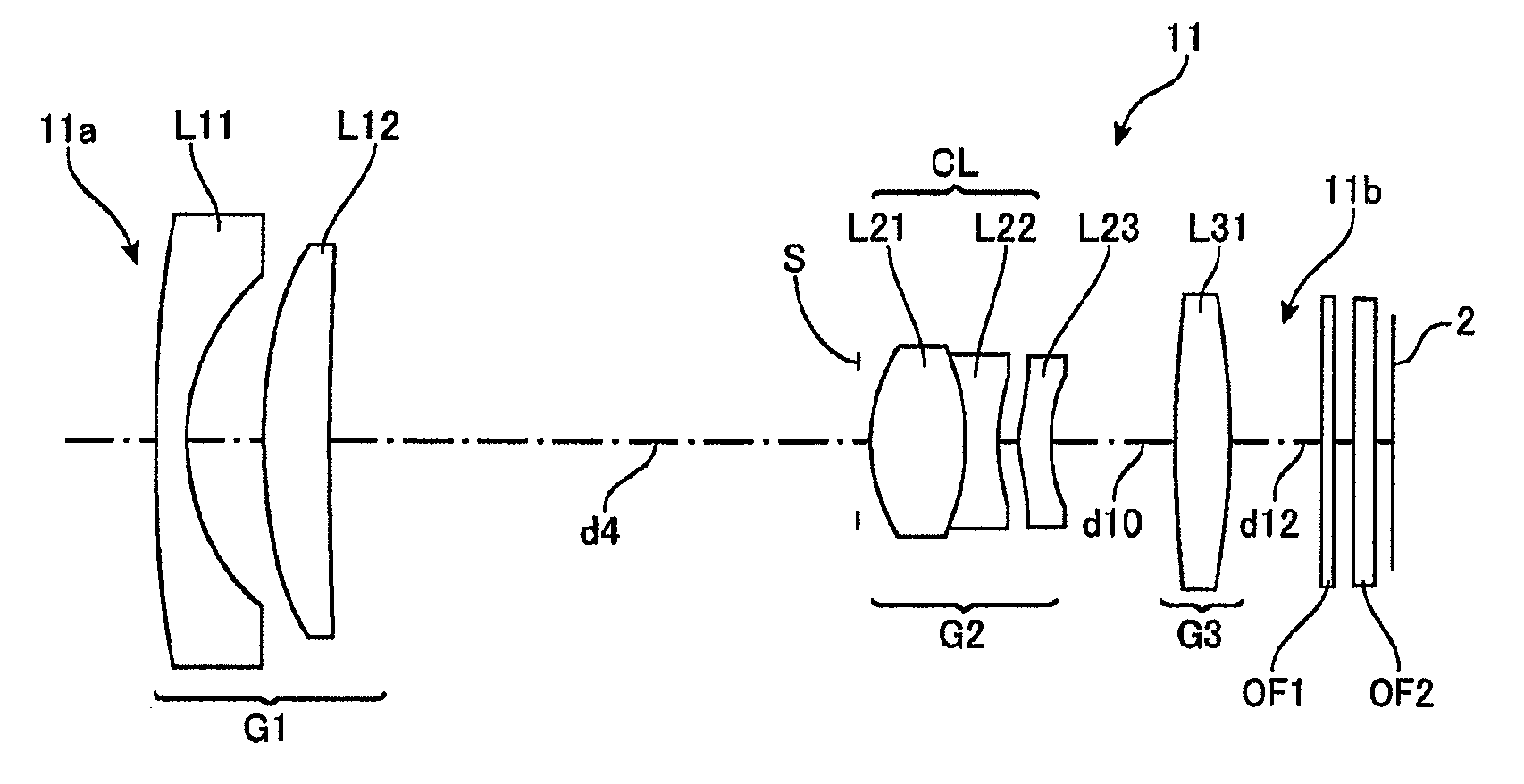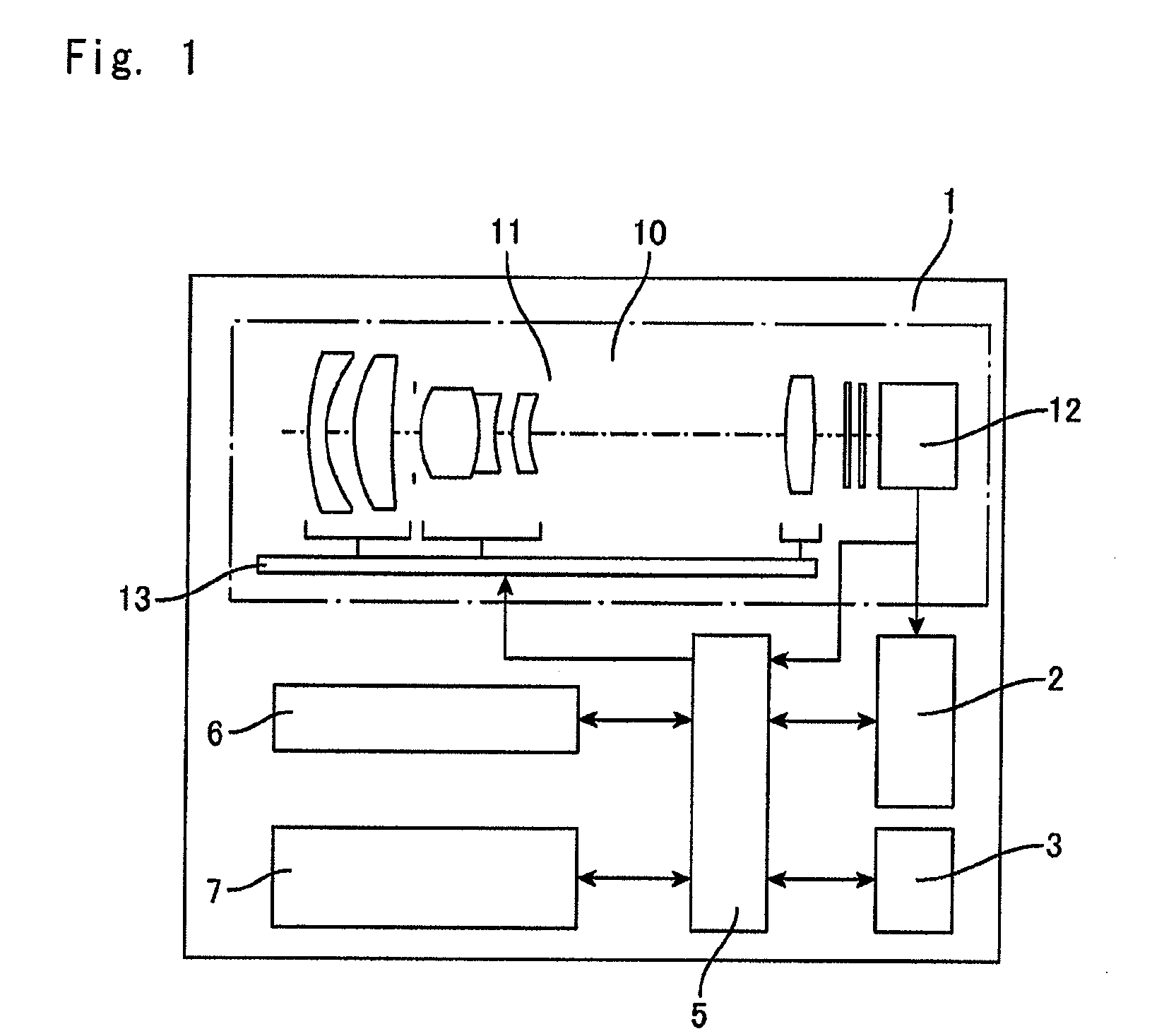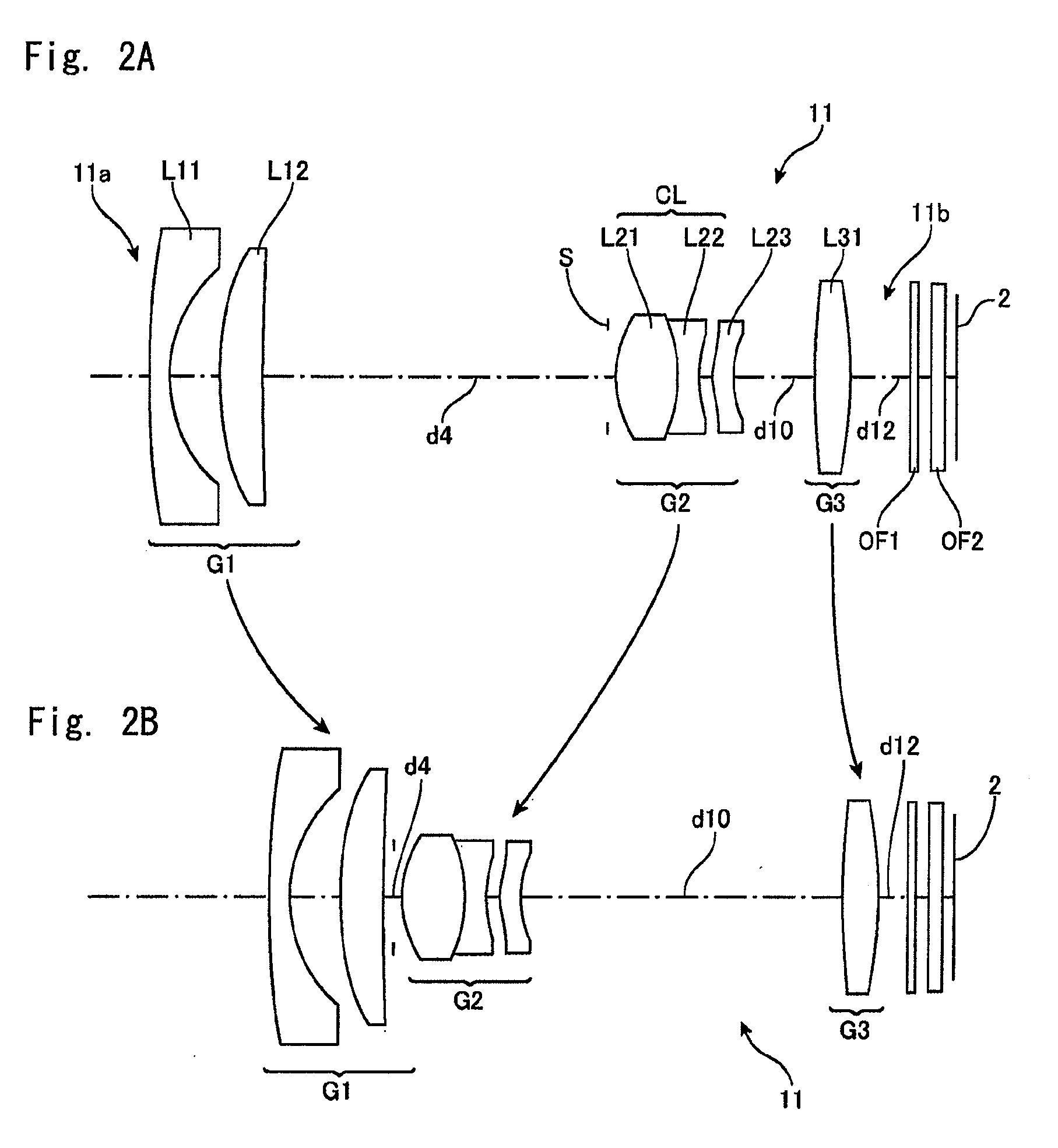Zoom lens system
a zoom lens and zoom technology, applied in the field of zoom lens systems, can solve the problems of reducing the correction performance of chromatic aberration, increasing spherical aberration, and not being favorable to chromatic aberration, so as to suppress the production of improve the correction performance of the second lens group for various types of aberration.
- Summary
- Abstract
- Description
- Claims
- Application Information
AI Technical Summary
Benefits of technology
Problems solved by technology
Method used
Image
Examples
Embodiment Construction
[0025]FIG. 1 shows the overall arrangement of an information terminal equipped with a camera function. In more detail, this information terminal 1 is a mobile phone equipped with a camera function or a PDA (Personal Data Acquisition, Personal Digital Assistance) equipped with a camera function. The information terminal 1 is equipped with a digital camera function 10 which includes a zoom lens system 11, an image pickup device 12 disposed at an image formation position (an image focus plane) of the zoom lens system 11, and a lens driving mechanism 13 that carries out a zooming operation by moving lens groups in the zoom lens system 11. The information terminal 1 further includes a display device 2, a data input / output device 3, a control unit 5 with functions such as a CPU, a memory device 6 such as a RAM disk and / or a hard disk, and a communication unit 7 for wirelessly connecting to a public telephone network and / or a computer network. The image pickup device 12 is a CCD or CMOS se...
PUM
 Login to View More
Login to View More Abstract
Description
Claims
Application Information
 Login to View More
Login to View More - R&D
- Intellectual Property
- Life Sciences
- Materials
- Tech Scout
- Unparalleled Data Quality
- Higher Quality Content
- 60% Fewer Hallucinations
Browse by: Latest US Patents, China's latest patents, Technical Efficacy Thesaurus, Application Domain, Technology Topic, Popular Technical Reports.
© 2025 PatSnap. All rights reserved.Legal|Privacy policy|Modern Slavery Act Transparency Statement|Sitemap|About US| Contact US: help@patsnap.com



